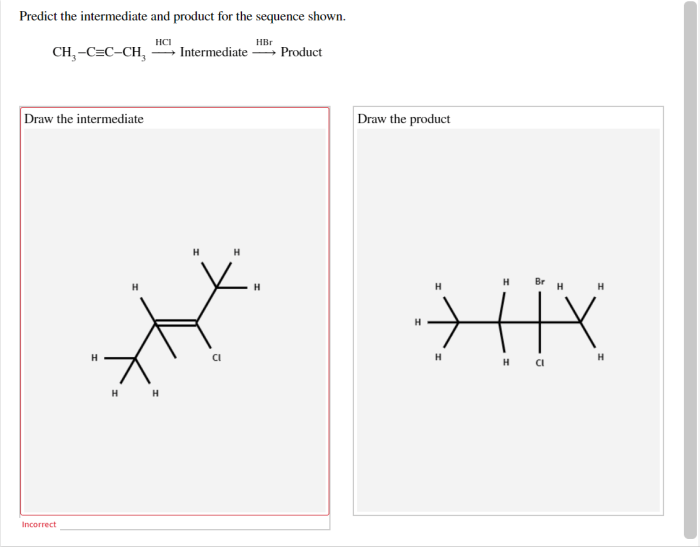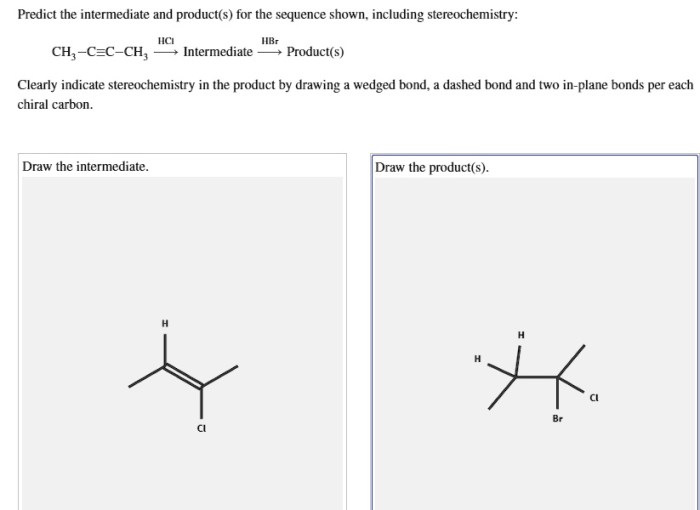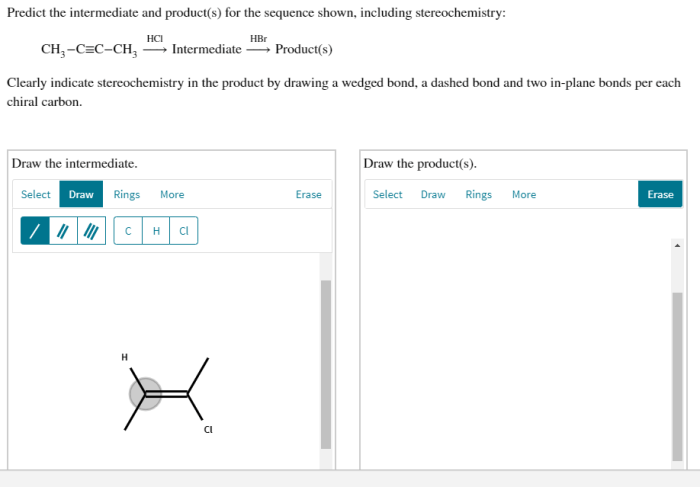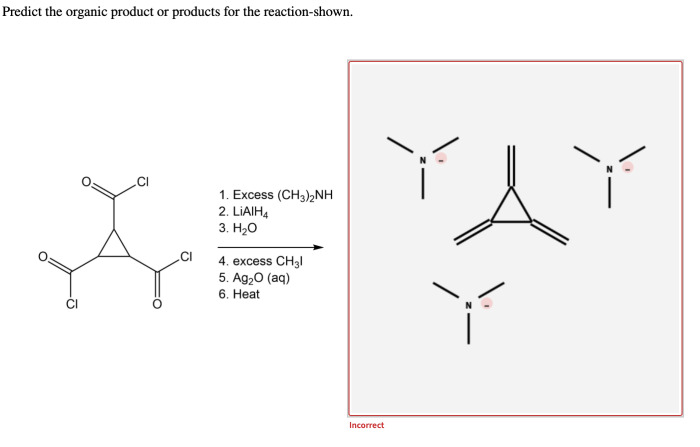Predict the intermediate and product for the sequence shown – Predicting the intermediate and product for a given sequence is a crucial aspect of scientific research and various industrial processes. Understanding the factors that influence these predictions and employing appropriate methods are essential for accurate and reliable outcomes.
This comprehensive guide explores the significance of predicting intermediates and products, delving into the methods used, factors influencing accuracy, and applications across diverse fields. It also examines emerging trends and future directions in prediction methods, highlighting areas for further research and the potential of artificial intelligence and machine learning.
Understanding the Concept: Predict The Intermediate And Product For The Sequence Shown

Predicting intermediates and products in a sequence is crucial for understanding the underlying mechanisms and outcomes of chemical reactions, biochemical pathways, and other processes involving sequential transformations. By identifying the intermediates and products, scientists can gain insights into the reaction mechanism, reaction rates, and overall efficiency of the process.
Accurate prediction of intermediates and products is essential for various applications, including drug discovery, materials science, and industrial chemical synthesis. It enables researchers to design and optimize reactions, predict reaction outcomes, and identify potential side products or impurities.
Methods for Prediction
Several methods are available for predicting intermediates and products in a sequence, each with its advantages and limitations:
- Thermodynamic analysis: This method predicts the most stable intermediates and products based on their free energy or enthalpy changes. It is simple and computationally efficient but may not account for kinetic factors.
- Kinetic analysis: This method considers the reaction rates and pathways to predict the most likely intermediates and products. It is more accurate than thermodynamic analysis but can be computationally expensive for complex systems.
- Quantum chemical calculations: These methods use computational chemistry to simulate the electronic structure and energy levels of the reactants, intermediates, and products. They provide detailed insights into the reaction mechanism but can be computationally demanding.
- Statistical methods: These methods use machine learning algorithms to predict intermediates and products based on large datasets of known reactions. They can be fast and efficient but may not be as accurate as other methods.
Factors Influencing Prediction
The accuracy of prediction is influenced by several factors:
- Experimental conditions: Temperature, pressure, solvent, and catalyst can affect the reaction pathway and the stability of intermediates.
- Sample size: Larger datasets and more diverse reaction conditions improve the accuracy of statistical and machine learning methods.
- Data quality: Accurate and reliable experimental data is essential for developing and validating prediction models.
To mitigate the influence of these factors, researchers use strategies such as controlling experimental conditions, collecting high-quality data, and validating prediction models against experimental results.
Applications in Different Fields, Predict the intermediate and product for the sequence shown
Predicting intermediates and products has wide applications in various fields:
- Drug discovery: Predicting the intermediates and products of metabolic pathways helps identify potential drug targets and design new drugs with improved efficacy and reduced side effects.
- Materials science: Predicting the intermediates and products of chemical reactions is essential for designing new materials with tailored properties and optimizing synthesis processes.
- Industrial chemical synthesis: Predicting the intermediates and products of chemical reactions enables the optimization of reaction conditions, reducing waste, and improving product yield.
Future Directions
Emerging trends and advancements in prediction methods include:
- Artificial intelligence: Machine learning and deep learning algorithms are being applied to develop more accurate and efficient prediction models.
- Quantum computing: Quantum computers have the potential to significantly speed up quantum chemical calculations, enabling more accurate predictions of complex systems.
- Integration of experimental and computational methods: Combining experimental data with computational predictions can improve the accuracy and reliability of predictions.
Quick FAQs
What is the purpose of predicting intermediates and products in a sequence?
Predicting intermediates and products helps identify the steps and outcomes of a reaction or process, enabling researchers and scientists to understand the underlying mechanisms and optimize the desired outcomes.
What factors influence the accuracy of prediction methods?
Accuracy is affected by factors such as experimental conditions, sample size, data quality, and the choice of prediction method. Careful consideration of these factors is crucial for reliable predictions.
How are prediction methods applied in different fields?
Prediction methods find applications in drug discovery, materials science, chemical engineering, and biotechnology, among others. They aid in designing experiments, optimizing processes, and predicting the properties and behavior of molecules and materials.


